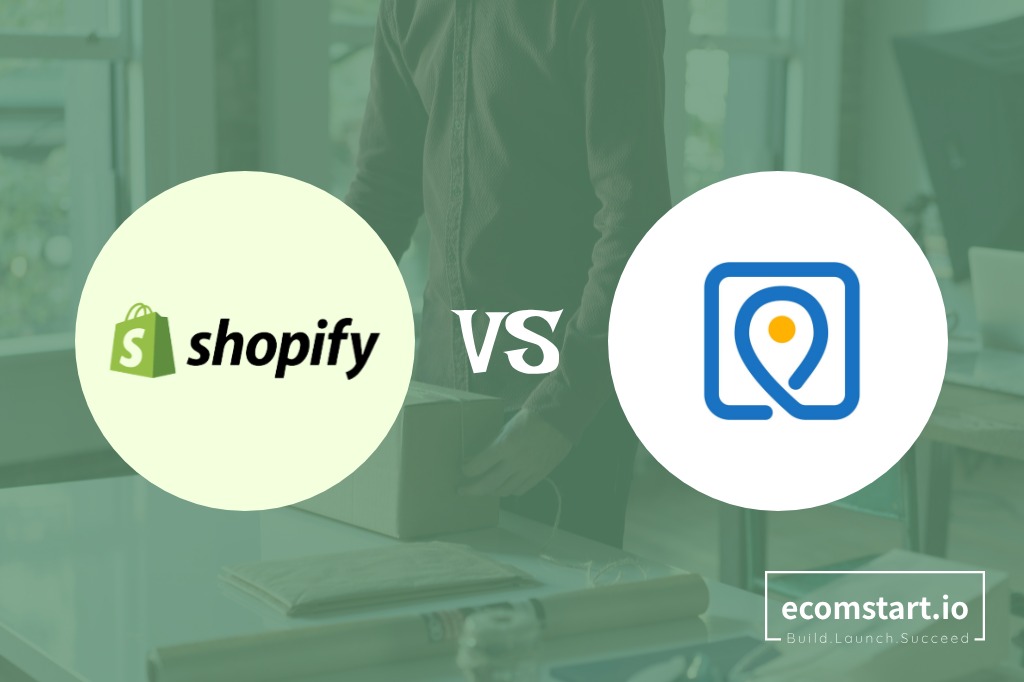How To Evaluate The Customer Support And Service Features Of An Amazon Seller Or Shopify Service For Dropshipping To Us Markets
It is important to evaluate the Customer Service and Support capabilities for dropshipping to the U.S. Market on Amazon Seller Shopify and WordPress (WooCommerce). This is because customer satisfaction is dependent on prompt and responsive support, swift communications, and reliable solution to problems. How can you evaluate the support and customer capability to provide customer service.
1. Amazon Seller
Amazon's Customer Support Policies for Customers:
Amazon has strict policies regarding customer communication. You are required to adhere to Amazon's guidelines for the manner and frequency of communication with customers. You are required to respond within 24 hour to customer inquiries and this is a very exigent obligation.
FBA sellers can save time using Amazon's FBA Program, which takes care of returns, refunds and customer queries. Merchant Fulfilled Network (MFN) requires you to handle the return, question and refunds in a direct manner.
Support for Sellers
Seller Support Service: Amazon offers seller support on its Seller Central platform. You will have access to FAQs, resources and live chat and email support. These support services can assist with issues like order issues, account management or policy issues.
Amazon is accountable to sellers by evaluating metrics like orders Defect rate (ODR) and the time it takes to respond. Insufficient customer service could cause account suspensions, so it is crucial to have a reliable customer service.
Amazon Sellers - Steps to Assessment
Check Amazon's Requirements for Customer Response Time Check to make sure that you're able to satisfy Amazon's requirements for response by ensuring that your system has the necessary bandwidth and tools.
Return Handling: If you're using MFN, check if your supplier or fulfillment partner provides support for returns. Amazon will manage returns if you use FBA. It's important to keep track of any issues and make sure that your customers are happy.
Customer Service: Make sure you're aware of Seller Central's tools for customer support. These include those dealing with refunds and disputes. Consider using third party tools to meet Amazon’s strict response requirements.
2. Shopify
Integrated Customer Service Apps:
Shopify has integrated with Gorgias Zendesk Re and Re and Re, which all offer customer support apps.
The dashboards let you centrally manage all customer queries across multiple channels (emails chats, emails and social media).
Automated Communication: Many apps available on Shopify offer automated replies, chatbots and FAQs, which can help customers quickly find answers to the most frequently asked questions.
Shopify provides a range of options for messaging that can be customized. For example you can customize emails for confirmations, abandoned-cart emails, or follow-up messages. These options will aid in building strong relationships with customers and provide the highest level of satisfaction.
Tracking orders and Notifications
Shopify provides real-time updates to customers, including notifications about the status of their purchases as well as tracking and shipping. This transparency reduces inquiries from customers regarding order status.
Customer Order Status: Shopify's order status page allows customers to view the status of their orders without needing to call customer support.
Assessment Steps for Shopify:
Review of available apps. Gorgias is a customer support app that works directly with Shopify. It provides all-channel support and reduces time in managing customer inquiries.
Flexibility of Customer Communication: Take a look at Shopify's choices for custom templates for emails, automated responses and chatbots that ensure timely and relevant customer interactions.
Customer Service After Sales: Check whether the platform has alternatives for customer service after sales like easy refund processing via the use of third-party applications or return labels. Shopify's integrations will make it easier for customers to get satisfaction and return.
3. WordPress (WooCommerce)
Customer Service Plugins
WooCommerce integrates directly with your plugins for your website, including LiveChat as well as Zendesk. These tools include live chat, knowledge bases, and customer service tickets.
Automated Chatbots - For quick answers, you can use AI based chatbot plug-ins (e.g. Tidio, ChatBot), which streamlines customer interaction and enhances response times.
Email Notifications WooCommerce offers personalized email notifications to customers regarding order confirmations as well as deliveries and shipping.
Tracking orders and managing returns:
Tracking Orders: TrackShip provides real-time order tracking information that customers can get on your site. It can reduce the number of inquiries regarding orders.
Returns and Refunds WooCommerce has flexible return and refund policies. WooCommerce plugins such as WooCommerce RMA can be used to automate returns. This feature makes it easier to handle refunds.
WooCommerce Assessment Steps:
Check out the plugins that support chatbots as well as live chat and ticketing. WooCommerce customers love LiveChat as well as Help Scout because they offer customer support integrated within the program.
Automated Tracking and Communication Make sure that customers can quickly access information about order tracking as well as status updates. In doing this, you will be reducing the number of queries from customers. TrackShip can offer automated tracking notifications.
WooCommerce lets you set up different return policies. Return handling plugins can make the experience of your customers more enjoyable. Follow the expert Sellvia review for site tips including ecommerce company, dropshipping website, ecommerce and dropshipping, create an online store, online business to buy, create and online store, e commerce brands, sellvia amazon, build an online shop, good items to dropship and more.

How Can You Best Evaluate The Scalability And Customization
Dropshippers who use Amazon Seller, Shopify and WordPress (WooCommerce) must look at scaleability and customization. Each platform offers different levels of flexibility, personalization and growth potential. This article provides a guideline on how to assess these elements when launching a dropshipping company in the U.S.
1. Amazon Seller
Scalability:
Marketplace Exposure and Infrastructure Amazon's huge U.S. customer database, Fulfillment by Amazon (or FBA) infrastructure, and a well-established reputation offer built-in scaling. Dropshipping can be less work for dropshippers, in terms of creating traffic however it can also mean more competition, and less control over branding.
Fulfillment through Amazon (FBA): With FBA, sellers can grow quickly by leveraging Amazon's logistics infrastructure for storage, packaging, and shipping. But, FBA is not typical for dropshipping as a whole, therefore sellers will need to find a balance between using Amazon's fulfillment and managing third-party dropshipping partnership with third parties.
Amazon's listing restrictions contain guidelines on dropshipping that restrict certain activities like direct shipping from another retailer. Amazon also regulates the way listings are displayed, which may affect the branding of products and their differentiation.
Customization:
Limitation of Store Customization: Amazon determines the look and feel of products pages, which limits personalization for brands and user experience. Sellers are limited in their options for branding, since they are unable to alter the layouts or colors.
Branding Tools for Registered Brands: Amazon's Brand Registry offers tools, including Enhanced Brand Contents (EBCs) and A+ Contents, for sellers with trademarks registered with the company. These features allow for customized content sections, images and detailed descriptions that make the product descriptions stand out and assist in establishing brand recognition.
Pricing and promotions: Amazon offers limited pricing control, with options for discounts, coupons, and lightning deals. Prices are affected by the competitive market environment, since many buyers do not compare prices on the basis of price.
Amazon Sellers: Assessment Steps
Review Fulfillment options: Determine the possibility of Amazon FBA is the best solution for your dropshipping. Make sure your dropshipping partners be compliant with Amazon's standards when you select MFN.
Take into consideration Brand Registry.
Analyze pricing: Amazon has a dynamic pricing environment. Understanding this will help you to stay in the game and increase your margins.
2. Shopify
Scalability:
Shopify's pricing model is based on the concept of a tiered system. Customers can begin with the basic plan, then move up to more advanced plans that offer greater transaction volume as well as additional features. They also have greater customization options. Shopify Plus provides advanced tools and features designed for businesses with high volumes.
Dropshipping applications and Fulfillment Networks Shopify easily integrates with dropshipping platforms such as Oberlo Spocket Modalyst. This allows sellers to increase the number of products they sell and to fill orders. Shopify can also integrate with fulfillment solutions like Shopify Fulfillment Network (SFN) and ShipBob, to support logistical scaling.
Third-Party Integrations: Shopify's extensive app store makes it easy to integrate additional features as your business grows. There are numerous apps for marketing and analytics and support for customers, inventory management, and even customer support. This is a strong infrastructure for dropshippers.
Customization:
Shopify themes allow you to modify your store. This allows sellers to have a branded shop. Themes can be customized to fit design, colors, and styles. Dropshippers can make their own unique experiences.
Shopify Liquid's code language is a powerful application for integration with apps and advanced customisations. If you are familiar with the development process or have the help of developers, this makes it possible for more sophisticated customizations. Shopify's API lets users connect to third-party applications or integrate apps that are custom.
Shopify provides a range of tools to personalize the shopping experience for its customers, including product recommendations, loyalty programmes, and customized email flows.
Evaluation Steps for Storeify
Assess Your Needs for Growth Make sure that your currently Shopify plan has the necessary features and upgrade options. Shopify Plus includes multi-store capabilities which is a fantastic way to scale.
Consider Customization options: Try various themes to figure out what customizations you need for your brand. Determine if you need developers to create custom-coded features or integrations.
App Integrations: Dropshipping applications that are compatible with Shopify and the other suppliers you select should have a an efficient inventory management and order management.
3. WordPress (WooCommerce),
Scalability:
Flexible Hosting Options for Flexible Hosting WooCommerce is self-hosted, meaning scaling is contingent on the web hosting provider. Managed WordPress hosting providers (e.g., WP Engine, Kinsta) can support high-traffic websites, but prices may increase as you scale.
Control over Infrastructure WooCommerce gives you total control over server configurations. This allows customized adjustments to be made as orders and traffic grow. This is a great option for dropshippers who anticipate large sales and require flexibility in their technology stack.
Plug-ins for Automating and Fulfillment: WooCommerce offers plugins that automate processes, such as AliDropship for WooCommerce, Printful for WooCommerce and Oberlo. These plugins help you streamline the process of processing orders, as well as updating inventory as well as other features for operational use.
Customization:
Flexible Themes and Design Options: WooCommerce offers thousands of free and premium themes, a lot of which are able to be completely customized. If you have CSS and HTML expertise you can design your own unique brand experience.
WooCommerce plugins are a wealth of customization options. The plugins can be added to help with SEO, loyalty programs, abandoned cart recovery, as well as other features that enhance the customer experience. This is beneficial for U.S.-focused dropshipping, in which targeted marketing and optimization of conversion are crucial.
The open-source nature of WooCommerce allows users to modify the code layer. It allows them to alter backend functions, create customized plugins, and build an individual user experience. With the versatility of the platform, you can alter anything on the product page and checkout flow.
WooCommerce Assessment steps:
If your dropshipping business expands it will require a hosting service that can handle the increasing volume of traffic. Hosting plans must offer scalable resources like storage and bandwidth.
Explore the theme and plugin customization Examine WooCommerce themes and plugins that can meet customization needs, particularly to support U.S. marketing strategies. Determine which plugins facilitate dropshipping processes.
If you require ongoing customization look into code-level changes. Have a look at the most popular Sellvia reviews for blog tips including e commerce marketing, web business for sale, ecommerce solution, e commerce marketing, buy online business for sale, best thing to sale online, creating an ecommerce website, online companies for sale, ecommerce business for sale, sell products online and more.

Comments on “Great Guide For Choosing Sellvia Wordpress Dropshipping Services”